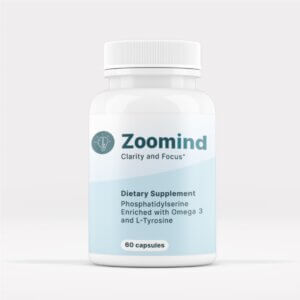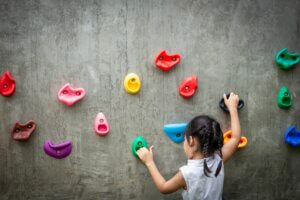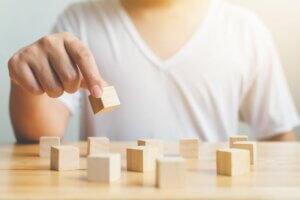
It’s clean up time!
Messes around the house are not uncommon when dealing with children who have ADHD. They are not being careless or inconsiderate, their focus can bounce from one activity or task to another, and they may not notice the mess they are leaving behind. According to ADDitude Magazine, if children with ADHD are asked to clean up after their mess, they might be a bit too overwhelmed to know where to start, or they start at once but quickly lose their focus before finishing the task. According to empoweringparents.com Some ADHD children lack the ability to be compliant, which results in meltdown mode, when there is a change of routine.. Creating simple, fun ways to encourage your child to clean up after themselves is a big step in creating a comfortable environment for them.
Some quick tips are:
- Breaking down each chore task. Being specific with the chore and asking politely in a patient manner. “Please pick up your books from the floor.” Marie Paxson of West Chester, a board member of CHADD stated, “ADHD kids are never going to spend two hours cleaning their room, so suggest doing twenty minutes cleaning up what’s on the floor and take a break. Then you come back and do another twenty minutes on the bed.” Another strategy she mentioned was placing a hula-hoop on the mess and having your child put away the items in the circle.
- Make a chore chart. Create a chart and a point system, where items that need to be put away have a certain amount of points. Put away your books equal five points, and five points can equate to an extra hour of playtime before bed.
- Show just don’t tell. When your child sees that organization is important to you, it helps them better understand why it should be important to them.
Minimize distractions
This is the time for you and your child to declutter and throw away items that do not spark joy. If you haven’t already, watch Tidying Up with Marie Kondo on Netflix. You will find useful information to create harmony in your home. As you may know, distractions can cause ADHD kids to focus on different activities and tasks. If your child has a designated space for themselves in your household, only have a minimal amount of personal items for them to use daily. This can be everything from essential items, toys, activities, clothes, books and even, electronics. Having minimal items can alleviate stress for you and your kin. Fewer items may also reduce putting children with ADHD in danger when they impulsively grab, by reflex, harmful household items. Focus on their favorite items and items that they use frequently. This also goes hand in hand, with teaching them how to clean up after themselves. This will encourage them to place items where they need to be and also teach them the importance of not being materialistic.
Cut down screen time!
Research has shown that it is a myth that children with ADHD can’t focus. In fact, their attention can be directed quite intensely to technology. Excessive tech time for everybody can cause bad eyesight and disrupted sleep due to our circadian rhythm. Researchers have linked electronic dependency to symptoms of anxiety, depression, and low self-esteem, depending on what type of media they spend their time on. Just because we have an abundance of time, it’s easy to let your children spend a lot of time on electronics when there is nothing to do. Suggest different ideas such as art, reading books, as dull as it sounds to some children, this is a great time to learn new things. Maybe encourage them to utilize their electronics for educational purposes. It may be hard to instill rules to help them put away their techy gadgets, but help them understand that there is a correct time and place to use them.
Calming environment!
We have covered the organizational aspect in creating a clean environment for your children to thrive, but let’s talk about a calming environment. The interior of your house can affect the mood of children with ADHD. Bright, blaring colors that do not scream zen, can be a sight for sore eyes and can cause discomfort. Strong, overpowering scents can be distracting for a child. Stick to calming colors, such as earth tones and serene blues. Use dim lights when it is bedtime, and avoid super bright fluorescent lights. Apart from minimizing the amount of personal daily items your child uses, minimalistic furnishings at home may also reduce the overstimulation of a child and may also reduce anxiety.
Give them space!
It is essential to have specific places in your home, where your child can differentiate the time for play and the time for sleep. It’s best for a child if they have their own sense of safe space. Children with ADHD are prone to being physically intrusive. Constantly moving, fiddles with everything in sight and acts as if “they are driven by a motor”. Giving your child their own space lessens the trigger ADHD outburst. At home, the space we give them can allow a child to be more organized when they play, study, and rest at their own comfort. Giving them space also extends to daily activities outdoors so try to avoid places such as over-crowded parks, packed restaurants, or even rush-hour congestion as these can overstimulate a child.
Set good quality routines!
Now that everything is prim and proper, one of the most important things in helping your child manage daily tasks is to set-up a good routine. This should be the backbone of what they do from waking up until bedtime. Routines help children with ADHD stay focused on accomplishing everything they have to do throughout the day. Try using checklists, visual schedules, or even sticky notes to give them reminders. A good example would be making their beds immediately after they wake up and setting a designated time for studying. Remember to break tasks into smaller chunks and also give them play breaks in between! Also, be mindful that you have to warn your child for any changes in the set routine and what he or she may expect when they are given the new situation.

Be patient!
Avoiding ADHD triggers may mean making many changes in your lifestyle. Sticking to these lifestyle changes will help you in managing the symptoms of ADHD. Patience is key. A stressed-out parent will surely result in a restless child.
Your feelings are valid during times of uncertainty, it is okay to feel stressed, anxious, and scared, we are all trying to adjust. Staying indoors, and embracing the new normal by creating a routine and an optimal environment will help you relieve you and your child’s stress. A home full of harmony is the start of your ADHD child’s growth and development.








